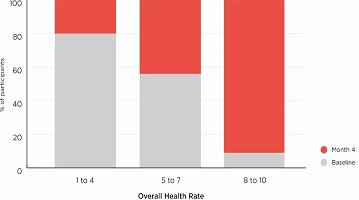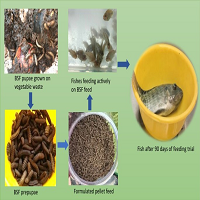1. Committee on Quality of Health care in America, Institute of Medicine. Crossing the Quality Chasm: A New Health System for the 21st Century. Washington, DC: National Academy Press; 2001.
2. Brennan TA, Leape LL, Laird NM, et al. Incidence of adverse events and negligence in hospitalized patients: Results of the Harvard Medical Practice Study I. N Engl J Med. 1991; 324: 370-376. doi: 10.1056/NEJM199102073240604
3. Wilson RM, Runciman WB, Gibberd RW, et al. The quality in Australian health care study. Med J Aust. 1995; 163: 458-471. doi: 10.5694/j.1326-5377.1995.tb124691.x
4. Vincent C, Neale G, Woloshynowych M. Adverse events in British hospitals: Preliminary retrospective record review. BMJ. 2001; 322: 517-519. doi: 10.1136/bmj.322.7285.517
5. Forster AJ, Asmis TR, Clark HD, et al. Ottawa hospital patient safety study: Incidence and timing of adverse events in patients admitted to a Canadian teaching hospital. Can Med Assoc J. 2004; 170: 1235-1240. doi: 10.1503/cmaj.1030683
6. Baker GR, Norton PG, Flintoft V, et al. The Canadian adverse events study: The incidence of adverse events among hospital patients in Canada. Can Med Assoc J. 2004; 170: 1678-1686. doi: 10.1503/cmaj.1040498
7. Kalra J, Kalra N, Baniak N. Medical error, disclosure and patient safety: A global view of quality care. Clin Biochem. 2013; 46: 1161-1169. doi: 10.1016/j.clinbiochem.2013.03.025
8. American Medical Association Council on Ethical and Judicial Affairs. Code of Medical Ethics: Current Opinions. Chicago, USA: American Medical Association; 2000.
9. Hebert PC, Levin AV, Robertson G. Bioethics for clinicians: 23. Disclosure of medical error. Can Med Assoc J. 2001; 164(4): 509-513. Web site. https://repository.library.georgetown.edu/handle/10822/943911. Accessed August 30, 2016
10. Gallagher TH, Waterman AD, Ebers AG, et al. Patients’ and physicians’ attitudes regarding the disclosure of medical errors. JAMA. 2003; 289: 1001-1007. doi: 10.1001/jama.289.8.1001
11. Robertson GB. Fraudulent concealment and the duty to disclose medical mistakes. Alberta Law Rev. 1987; 25: 215-223. Web site. https://repository.library.georgetown.edu/handle/10822/728947. Accessed August 30, 2016
12. Crawshaw R, Rogers DE, Pellegrino ED, et al. Patient-physician covenant. JAMA. 1995; 273: 1553. doi: 10.1001/jama. 1995.03520430089054
13. Sutcliffe KM, Lewton E, Rosenthal MM. Communication failures: An insidious contributor to medical mishaps. Acad Med. 2004; 79: 186-194. Web site. https://psnet.ahrq.gov/resources/resource/1940. Accessed August 30, 2016
14. Joint Commission on Accreditation of Health care Organization. Comprehensive Accreditation Manual for Hospitals: The Official Handbook. Illinois, USA: JCAHO; 2004.
15. Medical Care Availability and Reduction of Error (Mcare) Act. 2002. 13 Pa C S §308.
16. Australian Council for Safety and Quality in Health care. Draft Open Disclosure Standard. Standards Australia, XX 1234-2002, Draft v5.2.
17. Bismark M, Dauer E, Paterson R, et al. Accountability sought by patients following adverse events from medical care: The New Zealand experience. CMAJ. 2006; 175: 889-894. doi: 10.1503/cmaj.060429
18. Dyer C. NHS Staff should inform patients of negligent acts. BMJ. 2003; 327: 7. doi: 10.1136/bmj.327.7405.7
19. National Steering Committee on Patient Safety. Building a Safer System—a National Integrated Strategy for Improving Patient Safety in Canadian Health care. NSCPS, 2002. Web site. http://www.royalcollege.ca/portal/page/portal/rc/common/documents/advocacy/building_a_safer_system_e.pdf. Accessed August 30, 2016
20. Physician disclosure of adverse events and errors that occur in the course of patient care. Web site. www.quadrant.net/cpss/index.html. Accessed October 15, 2004
21. Physician disclosure of harm that occurs in the course of patient care. Web site. www.umanitoba.ca/colleges/cps/Guidelines_and_Statements/169.html. Accessed October 15, 2004
22. Borsellino M. Disclosure of harm to be standard of practice. Medical Post. 2003; 39.
23. Code of Ethics of Physicians. Web site. www.cmq.org/UploadedFiles/cmqcodedeontoan.pdf. Accessed October 15, 2004







